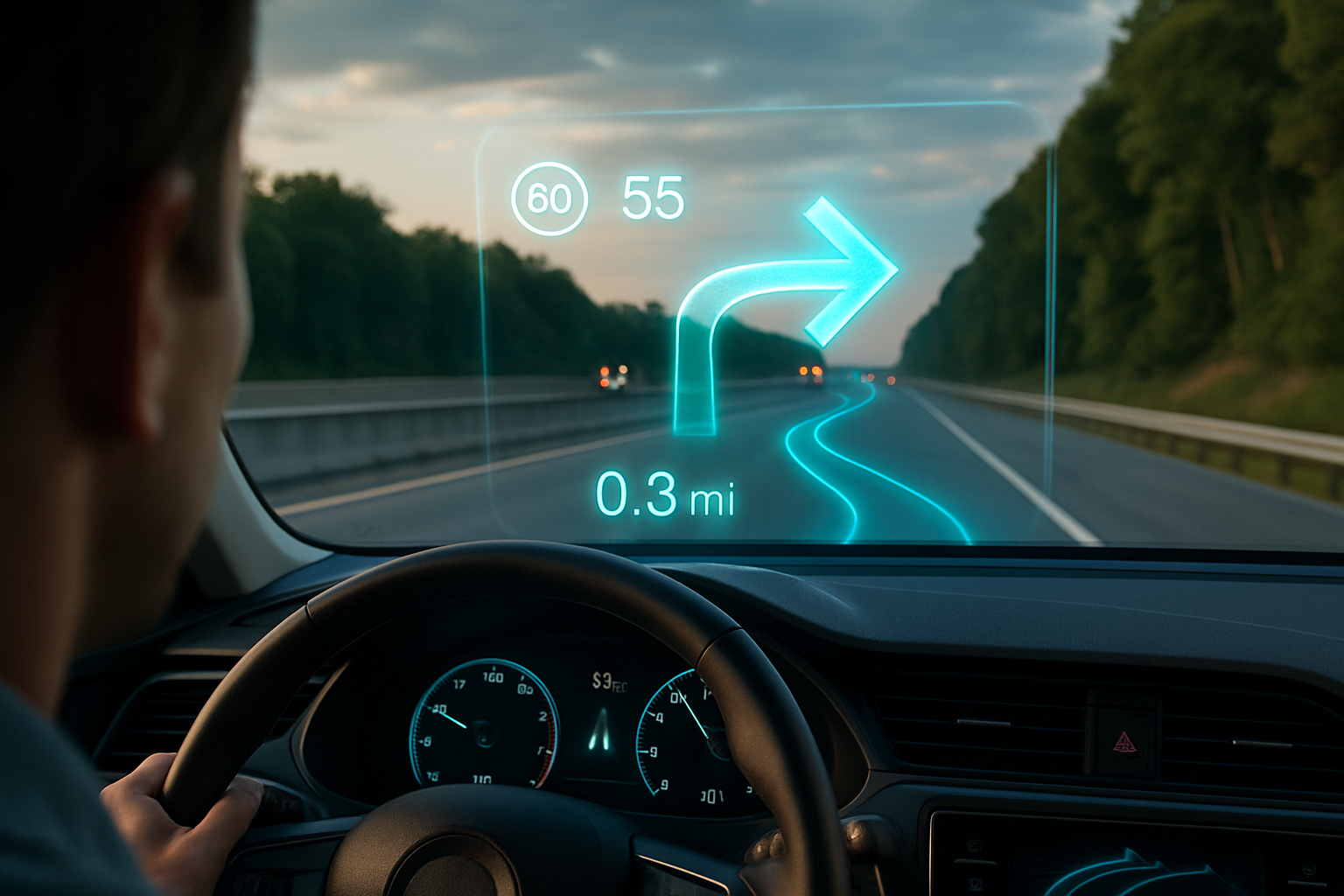Holographic Heads-Up Displays: The Future of In-Car Information
The fusion of advanced optics and automotive technology is ushering in a new era of driver information systems. Holographic heads-up displays (HUDs) are poised to revolutionize how we interact with our vehicles, offering an immersive and intuitive interface that keeps eyes on the road while providing crucial data. This cutting-edge technology promises to enhance safety, improve navigation, and transform the driving experience.

The Evolution of In-Car Displays
The journey to holographic HUDs began with basic speedometers and has progressed through various stages of technological advancement. Early cars relied on simple analog gauges, which gave way to digital displays in the 1980s. The first automotive HUDs appeared in the late 1980s, projecting basic information onto the windshield.
As technology improved, these displays became more sophisticated, incorporating color and a wider range of data. However, traditional HUDs still faced limitations in terms of the amount and complexity of information they could present without obstructing the driver’s view.
How Holographic HUDs Work
Holographic HUDs represent a quantum leap in display technology. Unlike conventional HUDs that project an image onto the windshield, holographic systems create a three-dimensional image that appears to float in space before the driver. This is achieved through a combination of advanced optics, lasers, and holographic films.
The system uses a laser light source to project an image onto a specially designed holographic optical element (HOE) embedded in the windshield. The HOE acts as a diffraction grating, bending the light to create a virtual image that appears to hover in the driver’s field of view. This technology allows for a larger display area and more vibrant, easily readable information.
Enhancing Driver Safety and Awareness
One of the primary advantages of holographic HUDs is their potential to improve driver safety. By presenting critical information directly in the driver’s line of sight, these systems reduce the need for drivers to take their eyes off the road. This can significantly decrease reaction times and improve overall situational awareness.
Advanced holographic HUDs can also incorporate augmented reality features, such as highlighting potential hazards or overlaying navigation instructions onto the actual road ahead. This seamless integration of virtual information with the real world can help drivers make better-informed decisions and navigate complex traffic situations more effectively.
Expanding the Scope of In-Car Information
Holographic HUDs offer a vastly expanded canvas for displaying information compared to traditional instruments or screens. This allows for a more comprehensive and customizable driving experience. Drivers can potentially access a wide range of data, from basic speed and fuel levels to more advanced metrics like tire pressure, engine temperature, and even real-time traffic updates.
The three-dimensional nature of holographic displays also opens up new possibilities for information presentation. For example, navigation instructions could be displayed as 3D arrows that appear to float above the road, making directions more intuitive and easier to follow.
Challenges and Future Developments
While holographic HUD technology holds immense promise, it also faces several challenges. One of the primary hurdles is cost - the advanced optics and processing power required for these systems can be expensive, potentially limiting their adoption to high-end vehicles initially.
Another challenge is ensuring that the holographic displays remain visible and clear under various lighting conditions, from bright sunlight to nighttime driving. Researchers are working on adaptive brightness controls and advanced anti-glare technologies to address these issues.
Looking to the future, we can expect holographic HUDs to become increasingly sophisticated. Integration with vehicle sensors and AI systems could allow for predictive displays that anticipate the driver’s needs. For instance, the system might automatically display relevant information based on the current driving situation or even the driver’s emotional state.
As holographic HUD technology matures, we may see it expand beyond the windshield. Side and rear windows could potentially become display surfaces, creating a fully immersive information environment within the vehicle.
The road ahead for holographic HUDs is filled with exciting possibilities. As this technology continues to evolve, it promises to transform not just how we view information in our vehicles, but how we interact with them. The future of driving is set to become more intuitive, safer, and more connected than ever before, with holographic HUDs leading the way in this automotive revolution.





